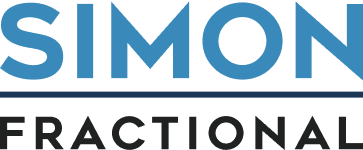The B2B SaaS customer journey is more complex than ever. With multiple decision-makers, long sales cycles, and an increasing demand for personalized experiences, companies must have a deep understanding of how customers move from awareness to purchase.
However, many SaaS companies struggle to map and optimize their customer journeys effectively. This is where a Fractional CMO plays a pivotal role: aligning marketing and sales efforts, implementing data-driven strategies, and ensuring that every touchpoint nurtures prospects toward conversion.
A 2024 McKinsey study found that B2B SaaS companies with well-defined customer journeys see 35% higher conversion rates and 25% greater customer retention than those that don’t.
In this blog, we’ll cover:
- Why mapping the customer journey is critical for SaaS growth
- The five key stages of the B2B SaaS customer journey
- How a Fractional CMO refines and optimizes each stage
- Real-world case studies on customer journey optimization
- Next steps for improving your SaaS customer journey
Why Mapping the Customer Journey is Critical for B2B SaaS Growth
In B2C marketing, buyers often make impulse-driven purchases, but the process is longer, more complex, and involves multiple stakeholders in B2B SaaS.
A 2023 Gartner report found that:
- The average B2B buying cycle lasts 6-9 months
- The typical buying group includes 6-10 decision-makers
- 77% of B2B buyers conduct independent research before engaging sales
Without a well-defined customer journey, SaaS companies face:
- Low conversion rates due to misaligned messaging
- High churn rates from poor onboarding experiences
- Inefficient marketing spend targeting the wrong personas
Fractional CMOs bridge these gaps by defining, refining, and optimizing the entire customer journey.
The Five Key Stages of the B2B SaaS Customer Journey
A well-structured B2B SaaS customer journey consists of five stages:
1. Awareness Stage (Problem Recognition)
Customers first realize they have a challenge or need. They begin searching for insights, educational content, and potential solutions.
Key Marketing Strategies:
- SEO-driven blog content that answers common pain points
- Thought leadership articles & LinkedIn engagement
- Industry reports & guides to establish credibility
Example: HubSpot’s inbound marketing strategy focuses heavily on SEO-rich educational content, attracting millions of visitors per year and nurturing them into leads.
2. Consideration Stage (Research & Evaluation)
Buyers explore different solutions, compare vendors, and weigh pros/cons.
Key Marketing Strategies:
- Case studies showcasing real-world impact
- Product comparison pages & interactive ROI calculators
- Targeted retargeting ads & ABM (Account-Based Marketing)
Example: Salesforce leverages detailed customer success stories to demonstrate how its CRM improves revenue growth for different industries.
3. Decision Stage (Vendor Selection & Purchase)
Buyers are ready to make a decision but need final validation.
Key Marketing Strategies:
- Live product demos & free trials
- Customer testimonials & user-generated reviews
- Sales enablement tools (one-pagers, pricing calculators)
Example: Zoom’s freemium model allows users to experience the product risk-free, reducing friction in the purchase process.
4. Onboarding & Adoption Stage
Customers have made a purchase—now the goal is seamless onboarding and high adoption rates.
Key Marketing Strategies:
- Automated onboarding emails & in-app tutorials
- Dedicated customer success teams
- User training webinars & help centers
Example: Slack’s interactive onboarding walkthroughs help new users quickly grasp key features, increasing activation rates.
5. Retention & Advocacy Stage
Long-term success in SaaS depends on customer retention and advocacy.
Key Marketing Strategies:
- Customer loyalty programs & referral incentives
- Quarterly business reviews (QBRs) to showcase value
- Exclusive customer events & VIP communities
Example: Dropbox incentivizes user referrals by offering free storage upgrades, significantly increasing retention.
How a Fractional CMO Optimizes Each Stage of the Customer Journey
A Fractional CMO provides expertise in mapping and refining the entire B2B SaaS customer journey.
1. Aligning Sales & Marketing to Improve Lead Conversion
Fractional CMOs ensure that marketing-generated leads are sales-ready by:
- Defining clear MQL (Marketing Qualified Lead) & SQL (Sales Qualified Lead) criteria
- Implementing lead scoring models to prioritize high-value prospects
- Facilitating weekly marketing-sales alignment meetings
Case Study: A SaaS company struggling with low conversion rates (2%) increased SQLs by 45% after a fractional CMO implemented a lead scoring and nurture workflow.
2. Refining Messaging to Match Buyer Intent
A strong positioning strategy is essential for engaging potential buyers.
- Fractional CMOs audit existing website messaging, content strategy, and ad creatives
- Optimize landing pages, email sequences, and ad copy for higher engagement
- Conduct customer persona research to refine pain points & benefits
Case Study: After repositioning its messaging, a B2B SaaS company saw a 38% increase in engagement and 22% reduction in customer acquisition costs (CAC).
3. Implementing Data-Driven Growth Strategies
Fractional CMOs leverage analytics to track and optimize each stage of the journey.
- A/B testing landing pages, email campaigns, and CTAs
- Analyzing drop-off points in the sales funnel to refine touchpoints
- Using predictive analytics to personalize buyer interactions
Example: An AI-powered SaaS firm boosted trial-to-paid conversions by 60% after its fractional CMO identified friction points in the onboarding process.
Next Steps: How to Improve Your SaaS Customer Journey
Step 1: Conduct a customer journey audit to identify friction points.
Step 2: Define MQL & SQL handoff criteria to improve sales-marketing alignment.
Step 3: Leverage customer insights to personalize content and nurture sequences.
Step 4: Implement AI-driven automation to enhance lead nurturing and retention efforts.
Final Thoughts
Mapping and optimizing the B2B SaaS customer journey is critical for higher conversions, better customer retention, and sustainable revenue growth.
A Fractional CMO brings the expertise needed to refine marketing strategies, improve sales enablement, and create a seamless customer experience—without the overhead of a full-time executive hire.
Looking to optimize your customer journey and boost conversions? Let’s talk.
Doug Simon
My experience in B2B SaaS started in 2010 when I developed a first-of-its-kind product, creating an entire new category.


